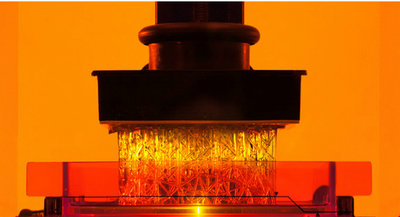Ultraviolet light (UV) curing coating is a new type of environmental protection coating developed by Germany in the late 1960s. It has the advantages of high efficiency, energy saving, no pollution, fast film forming speed and excellent coating performance, so it has been developed rapidly.

UV curing can be divided into free radical curing and cation curing according to the mechanism. Under UV irradiation, different photoinitiator decomposition results are different, some produce free radicals, some produce cations, free radicals or cations can trigger corresponding oligomers and active diluents with reactive activity, polymerization reaction occurs, forming polymers with three-dimensional network structure.
Free radical formula cures faster than cationic formula on both paper and aluminum. This is because after UV irradiation of cationic initiator, the superacid active center is generated. Due to the existence of alkaline impurities in the system, the active center is neutralized in the presence of alkali first, resulting in the cationic polymerization speed curtain.
Oxygen has a significant effect on the curing rate of free radicals, but has a weak effect on cations. However, under UV irradiation, oxygen becomes very reactive and can combine with the excited photoinitiator, and then decompose into the ground state photoinitiator and the singlet state O2. The reaction rate constant k can reach 109 order of magnitude, which reduces the efficiency of photoinitiator. During the cationic curing process, O2 does not react with the active center of strong acid produced by the initiator. Therefore, even if there is a small amount of O2 in the coating, it will have a great anti-polymerization effect on the free radical curing, but has little effect on the cation system.

Temperature control is also an important factor. The curing speed of both free radical and cationic formulations increased with the increase of temperature. Because in the process of photoinitiated polymerization, the initiation rate of photoinitiator is the lowest, which is the slow step to control the reaction.
The curing speed of UV free radical and cationic curing increased with the increase of temperature, and the curing speed of free radical was higher than that of cationic curing.
By the comparison of the two, free radical curing is suitable for adhesion is not very high, but requires rapid curing ink and coating, cationic curing technology is suitable for high adhesion requirements of ink and coating.
Reg Office: Room 435, Building 9, No.2568 Gudai Road, Minhang District, Shanghai, China.
Pilot Lab: Building 1, No. 589 Qinling Street, Shijiazhuang High-tech Zone,Hebei, China.
Plant Unit 1: Xincheng town clean chemical park, Xinji, Hebei, China.
Plant Unit 2: Dongming County South Chemical Park, Heze City, China.
Tel: +86-21-34943721
Email:Massive@massivechem.com
Info@massivechem.com
Shanghai Massive Chemical Technology Co., Ltd. All Rights Reserved(C)2023 Supported by Record number:沪ICP备18008139号